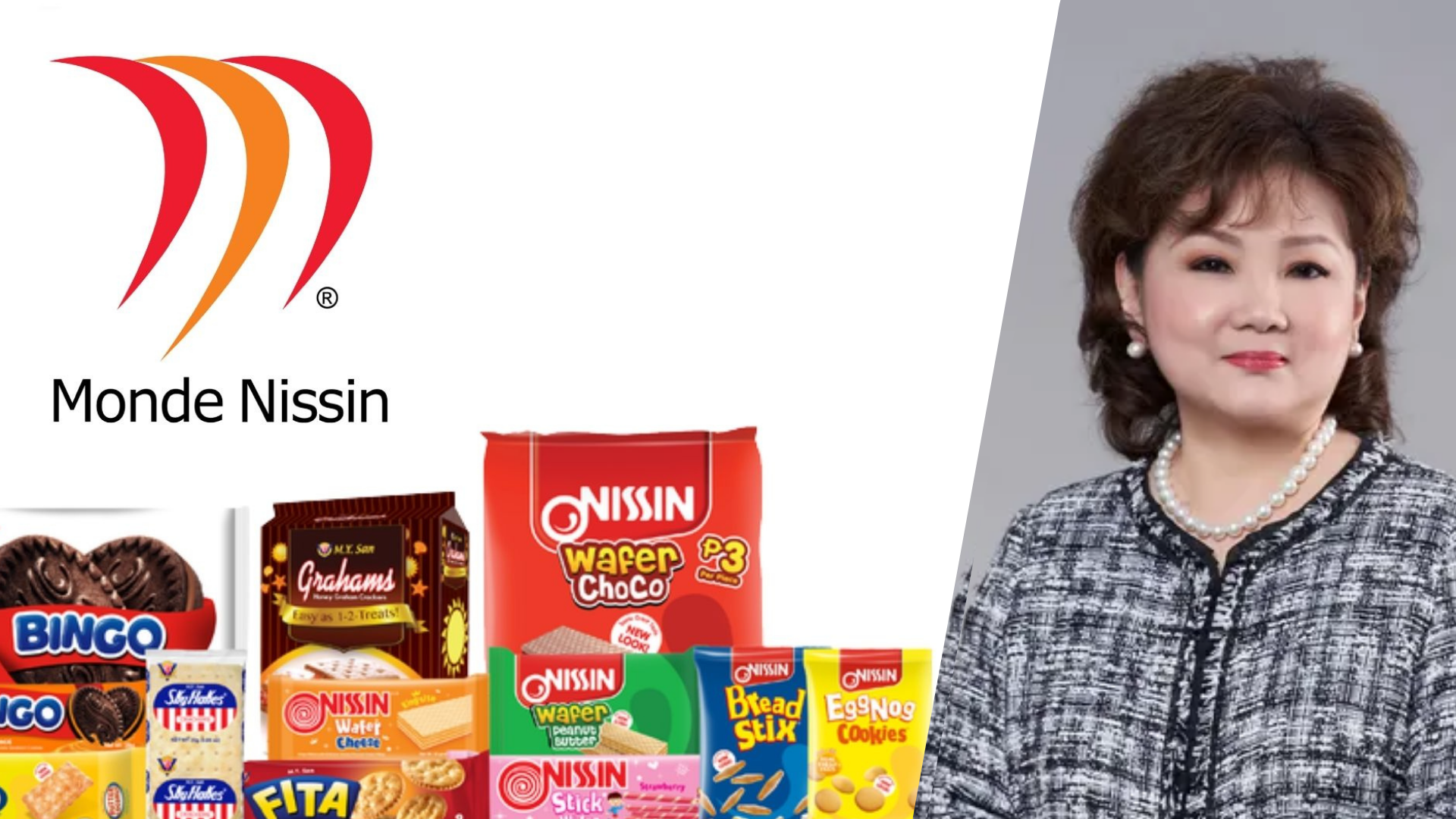


If you grew up in the Philippines, you probably have your own Lucky Me! origin story.
Maybe you split a bowl of pancit canton (think instant stir-fried noodles: savory, garlicky, and that sparkle of calamansi) with your barkada after class. Or you found SkyFlakes crackers tucked in your lunchbox by your mom.
For OFWs, these snacks top every “balikbayan” box they bring overseas from the Philippines—a taste of home, no matter where in the world you land.
For generations of Filipinos, these aren’t just products. They’re comfort and memories of childhood.
🌏 From Indonesia to the Philippines
The story starts with Hidayat Darmono, an Indonesian-Chinese entrepreneur from the family behind Khong Guan Biscuit—those famous red tins packed with every biscuit imaginable, a staple in Indonesian homes since the 1940s.
The Kweefanus/Darmono family's biscuit empire made them legends in their own market, but Hidayat saw something bigger: the chance to bottle that same everyday magic in the Philippines.
So, in 1979, armed with snack know-how, Hidayat and daughter-in-law Betty Ang (who’d soon become Monde Nissin’s president) set up a small factory in Sta. Rosa, Laguna, a province in the Philippines.
Their first treats, Nissin Butter Coconut Biscuits and Nissin Wafers, weren’t just tasty. They were made to be reliably delicious, every single time. That promise built trust, and trust built a fanbase ready for more.
🍜 The big bet on noodles
In the late ’80s, Monde Nissin wanted more than biscuits. Filipino families needed easy, filling meals—but instant noodles were nowhere near a staple yet.
In 1989, they launched Lucky Me! Instant Mami (instant noodle soup).
But 1991 brought the real game changer: Lucky Me! Pancit Canton, a three-minute take on the classic Filipino stir-fried noodle dish—garlicky, umami-loaded, with that tangy hit of calamansi. Suddenly, anyone could have a little "fiesta" (party), anytime.
🚚 Building an empire, one corner shop at a time
Getting on every table meant getting into every small shop (“sari-sari store” in the Philippines or “warung” in Indonesian), so Monde Nissin built their own distribution network from the ground up. Warehouses sprouted across Luzon, Visayas, and Mindanao.
Fleets of trucks rolled out, sales agents connected with sari-sari store owners, no barangay (neighborhood) left behind. By the mid-’90s, Lucky Me! wasn’t just popular—it was everywhere, with a logistics superpower that rivals couldn’t copy.
💥 Noodle wars
Success drew a crowd of competitors—global names, local players, aggressive pricing everywhere you looked.
Monde Nissin didn’t blink. They dropped even more flavors (calamansi, chili-mansi, extra hot), created multipacks for families, and made smaller sachets for students.
By 2020, Lucky Me! was slurped in about 68% of instant noodle bowls served nationwide, a grip they hold on tightly to.
🍘 Reinventing childhood snacks
In 2001, Monde Nissin sealed the deal to acquire M.Y. San—the snack house behind SkyFlakes, Fita, and Graham crackers.
SkyFlakes’ iconic red-and-white foil cracker packs were already Filipino staples: baon (packed treats for lunch or snacks), coffee breaks, care packages for loved ones abroad.
With this move, Monde Nissin became dominant not just in noodles, but biscuits too.
🥊 Navigating health scares
Then came the headlines: warnings about salt, MSG, and oil in instant noodles. Overnight, Lucky Me! was under the microscope.
Monde Nissin responded fast, launching fortified noodles, rollouts of “Lucky Me! Special” for a more premium feel, and school nutrition programs to show the brand was listening and ready to adapt.
📈 Staying in the arena
The 2010s brought price spikes for wheat, palm oil, and packaging.
For a wallet-friendly brand, this was a tightrope. Monde Nissin’s survival play? Squeeze factory efficiencies, negotiate ruthlessly with suppliers, and bulk up on scale.
And it worked. Lucky Me! stayed on pantry shelves, proving that discipline (not just big marketing) wins in tough times.
🌍 Beyond biscuits and noodles
The local throne wasn't enough. Monde Nissin’s next act: go global. First—that meant Black Swan dips in Australia.
Then came the blockbuster move: buying UK-based Quorn Foods for £550M (about $831M USD) in 2015. Quorn, a leader in plant-based meat alternatives, was meant to power Monde Nissin into new markets and new food trends across 15+ countries.
But here’s the reality check: Quorn has seen sluggish sales. Rather than boosting profits, Quorn has led to years of write downs and dragged on Monde Nissin’s group earnings.
The company continues to invest and push innovation, with some recent signs of improvement, but the journey has been far tougher than expected—a reminder that going global isn’t always a straight line.
💸 From biscuits to billions
On June 1, 2021, Monde Nissin went public, scooping up ₱48.6B (over $1B USD)—the largest IPO in Philippine history.
By 2023, yearly revenues soared to ₱75B ($1.3B USD). Lucky Me! dominated noodles, SkyFlakes stayed unchallenged in crackers, and Quorn remains a work in progress overseas.
🏆 Here on out
Monde Nissin is everywhere: after-school merienda, SkyFlakes with a cup of kape, snacks sent to far-off places in balikbayan boxes. Billions of packs. Generations of Filipino food moments.
And now? They’re not just local legends—they’re food giants contending with the challenges (and opportunities) that come with global ambition.
Editor’s Note (August 21, 2025):
We updated this piece to reflect the challenges Monde Nissin has faced with Quorn Foods since its acquisition—including slow growth and financial write downs that have weighed on profits.
Thanks to readers who flagged this for us. BackScoop is all about sharing both wins and setbacks to give a balanced, neutral view, so you always get the real scoop.

The newsletter that keeps you up-to-date on the top stories on tech and business in Southeast Asia. It's fun, quick and free.